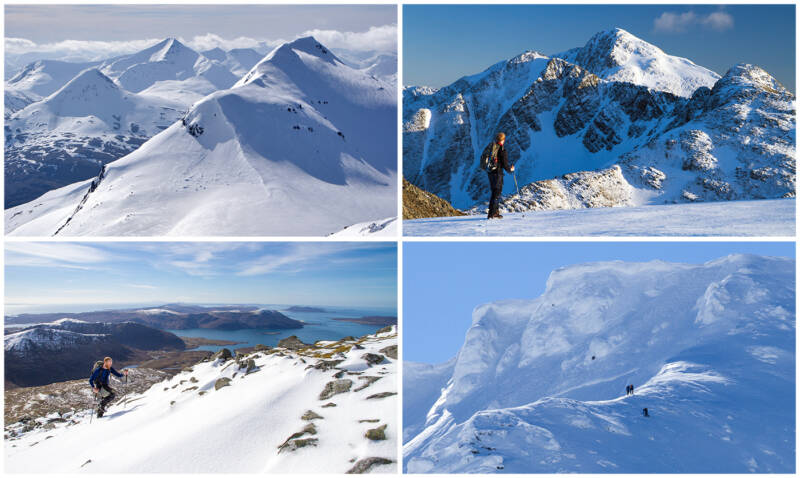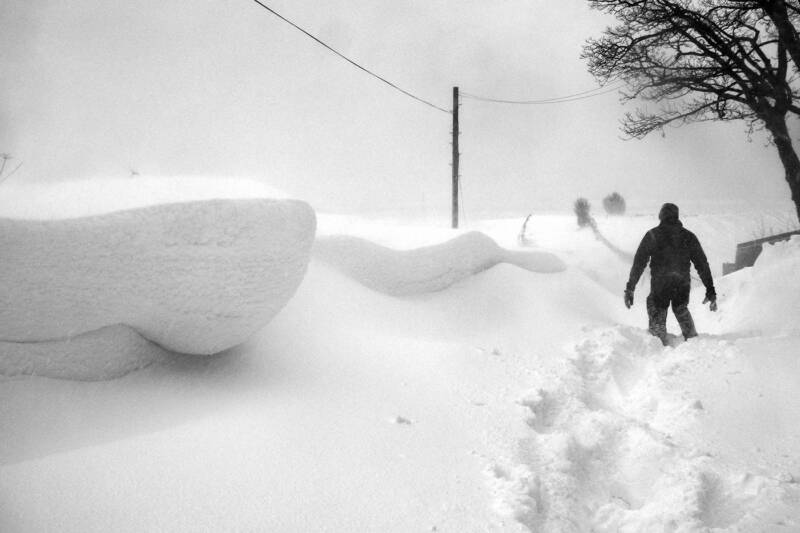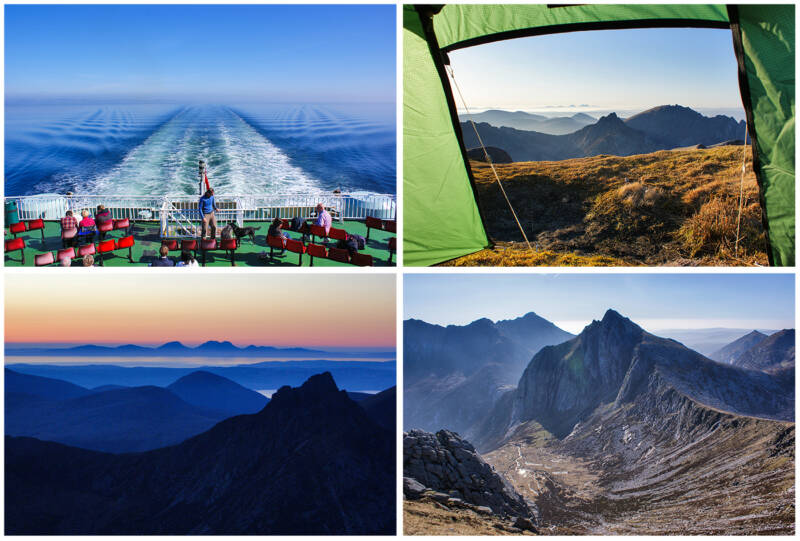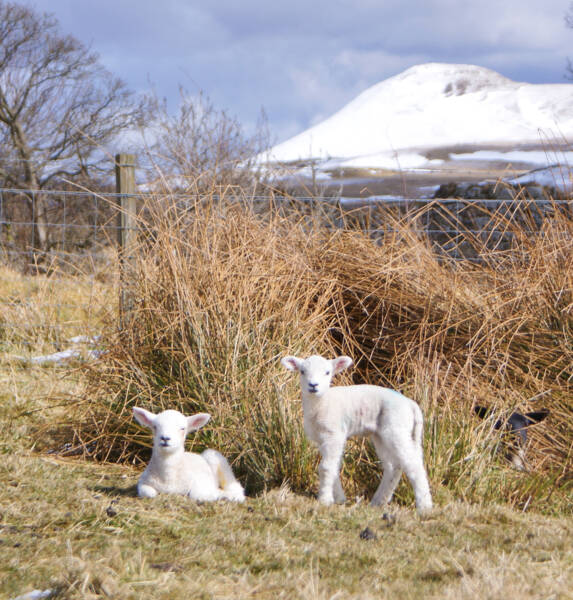
As something of a winter enthusiast I have a hard time letting go of the coldest season, even when…as this winter has been…..it’s the warmest, least frosty and most snow-starved winter I’ve experienced since moving to the Lomond Hills in 2010.
Under those trying circumstances I stubbornly ignore the exit signs for as long as possible, not least the big patch of snowdrops that appears outside the house. For weeks I have to pass it every morning, but I make a point of looking in the opposite direction as I do so because I’ve no interest in looking at flowers in January and February. It’s way too early!
But there comes a point when even I have to concede defeat, and while I’m okay with that, I still need to slowly ease myself off the good stuff. That means I need the weather equivalent of a nicotine patch.
Thank goodness, therefore, for March.

It’s the ‘in between’ time. The transition month when winter and spring fight it out in scrappy fashion, ebbing and flowing across the land, up and down the hillsides. The tussle often lingers well into April of course, and the ultimate winner is never in doubt, but the lingering breaths from the Arctic, set against the strengthening spring sun, mean March’s unique mix of light and shade offers something for everyone.
For the coldies among you, the frosts and ice are rarely far away, and neither are the heavy falls of snow. Hillwalking can be at its very best this time of year, with the higher hills holding impressive and well consolidated banks of snow on their ridges, coires and plateaux. Add to that the fact that the sun is now very warm indeed, and the Scottish hillwalking experience veers into almost alpine territory.
There’s nothing quite like the feeling of a hot sun when you’re crossing a snowfield in a t-shirt, but for goodness sake, don’t forget the suncream! Remember we’re now only 12 weeks from midsummer’s day.
By March, sunset is also getting later by almost five minutes every day. That gives you four more hours of daylight than in mid January. It’s like having an extra half-day for your snowy walks, which obviously enables you to have bigger days on the hill. Taking all that into account, it’s no surprise that when I think of my most cherished mountain days, the bulk of them occurred in March.
The Grey Corries – 11th March 2014
This was as alpine an experience as I’ve ever had. It was that winter when storm after storm after storm barrelled through for months, meaning nobody could actually get up into the hills to see how much snow there was. When the storms finally abated in March, there was more snow than anyone could remember in almost 70 years.
Ridges were now snowy arêtes worthy of the Alps. Avalanche debris littered many east-facing slopes. And there were hardly any rocks to be seen beneath that unblemished carpet. It was late season though, which meant the snow was rock hard and the run-outs stretched from summit to glen. I have never seen, and possibly never will again see the Highlands looking like that.

Five Sisters – 13th March 2015
One of those exquisitely calm and sharp blue-sky days that you only get the day after a cold Atlantic storm has cleared the atmosphere of any nastiness. Snowy and sunkissed, it was crazy t-shirt weather but I genuinely didn’t see a soul the whole day. 11 hours of daylight meant I could take my time and not rush, soaking up every second for all it was worth.
An Cliseam Horseshoe – 23rd March 2017
That was my first visit to Harris and I never dared to dream that I might get sunshine or snow, let alone both, for a round of those rugged hills. The whole week was cold and sleety save for that very last day, when spring finally arrived after an overnight dusting of snow. It was gobsmacking, with views of St Kilda to boot!
Ben Lui – 19th March 2018
Few hills in Scotland look so invincibly Himalayan when set white against a blue sky, so as I cycled in that morning, Ben Lui looming large, I knew I was in for a treat. Heading into Coire Goathach the snowy grandeur was immense, but also intimidating to see other folk further along the final ridge, just tiny specks dwarfed by suitably Himalayan-looking cornices. A serious, sobering day.
Those were all relatively benign walks, ice axe and crampons notwithstanding, but March can still be truly savage. High pressure over northern Europe can put us firmly in the freezer, offering up the best (or worst, depending on your preference) conditions of the whole winter.
To this day, March 2013 remains one of the snowiest of any month, winter or otherwise. Convection in the North Sea generated shed-loads of snow, and it still ranks as my second coldest month in Fife from the past 12 years, only narrowly beaten by December 2010.
And who can forget the Beast from the East, which enveloped the country at the very end of February 2018? It wasn’t nearly as cold or snowy as in 2013, but the peak of the blizzards that first week of March had much more of a bite, and the snow was more disruptive. Our hill road here in the Lomonds filled with drifting snow and was completely cut off for six days.

But when winds from the east dominate, as they often do at the tail-end of winter before the Atlantic stirs back into action in early summer, it invariably means day after day of oppressive greyness. Places like Aberdeen, Angus, Dundee, Fife and East Lothian can have all their colour sucked away by an easterly, languishing under thick murky cloud.
But what’s bad for the east is usually good for the west, the latter baking under a hot sun in an easterly and, unfortunately, going tinder-dry in the process. Little surprise, therefore, that March is traditionally the start of wildfire season in Scotland. Indeed March 2022 has followed the exact same script, with large fires burning Ben Lomond and Gruinard Island.
That strong sun also conspires to generate towering clouds, hail and rainbows, a photogenic mix of blinding light and impenetrable darkness. We’ve seen quite a bit of that this past week, with massive bright white snow showers sweeping across the landscape like thick dangling curtains.
Happily for most, any harshness to the weather at this time of year is counter-balanced by those first spring days when a high of 10C feels more like early summer. Certainly on days like that you get the advantages of summer (the light, the long days) but without the negatives (the midges, the bracken). What’s less certain, of course, is whether you get the two extremes of temperature in the order you would typically expect.
For me, that’s where spring’s appeal ultimately lies – in the constant flip-flopping and the drama of those contrasts. Early spring in particular is neither one thing nor the other, but ably displays the extremes of both, often in the space of a day or two or within a single holiday. You can return from a two-week break in March and feel you’ve lived through at least three seasons.
In particular I recall a fantastic fortnight on Skye in March 2014. I spent the first week based in Trotternish, exploring the peninsula, and every single day was cold, dark, moody and wet. Snow fell horizontally, mist swirled around the crags, and then a storm cut power to the whole island. It was challenging, but it was also the perfect weather for exploring the weird otherworldliness of the Quiraing.
However, on the changeover Saturday, when I moved to a new base over in Carbost from which to explore that side of the island, it was like a switch had been flicked overnight. Every single day that second week was calm, sunny and nudging 10C. Not hot by any means, but with a cool but light wind under a March sun, it was very pleasant indeed. Perfect weather for Coire Lagan, the Red Cuillin, Waterstein Head and coastal walks at Talisker, all with more eagles set against deep blues skies than you can possible imagine.

But it can just as easily flip the other way too, and farmers up here talk about ‘lambing snow’ for good reason.
March 2012 stands out as the most extreme example, when high pressure stuck to the UK like a limpet and drew warm southerly winds from the continent. A week-long heatwave ensued, with Scotland setting new March temperature records three days in a row, culminating with 23.6C in Aberdeenshire.
The whole country couldn’t believe its luck, and everyone scrabbled about to make hasty outdoor plans. Mine was an impromptu camping trip across to Arran, and that Calmac crossing from Ardrossan, across a beautiful millpond was so idyllic that I would have happily stayed on the ferry and sailed back and forth all weekend.
But instead I got the bus to Sannox, walked up Goatfell in the late afternoon when everyone else was heading down, and then pitched my tent among the summit boulders. It was a freakishly warm night. T-shirt weather. An incredible sunrise heralded the next morning, followed by a hot Glen Rosa horseshoe and a long pavement plod back to Brodick. I was verging on dehydration by the end, but it still remains one of my best hillwalking trips ever.
I, and many other people, joked at the time that the lovely warm, nay, HOT weather would probably end up being the sum total of our summer. A knowing joke, yes, but we never really believed it. But 2012 subsequently delivered the coldest, wettest summer in decades. Scotland enjoyed its coldest August day in 40 years, and the UK its wettest summer in 100 years.

Here in the Lomond Hills, that last week of March did end up being our warmest and nicest weather of the whole year! But its record-breaking noteworthiness was made even more noteworthy by what happened next.
Just days after I returned from Arran, the daffodils in Fife were buried under snow. On the high hills it snowed on and off throughout April, and eventually there was a base of almost four metres in parts of the Cairngorms.
The ski resorts had had a rubbish season. On 1st March, none of them were open and nobody seemed able to remember the last time that had happened. The whole of March passed by without skiing in Scotland. And yet, come May, I was still snowshoeing in the Cairngorms.
Spring is fickle indeed. But regardless of whether or not you get a cold snap after the warmth, when the warmth finally does arrive it’s hard not to be carried away by that uplifting sense that the world is waking up from winter slumber.
So yes, much as I might protest or put on an outward display of stubborn sulkiness at winter’s demise, there is an undeniable pleasure to be found in the ticklist of transition: spotting those first lambs dozing in close-cropped fields; hearing the first curlew calling from the hillside; the return of yellow when the daffs come out; the first chiffchaff in the trees.
Yes, even the droning of strimmers and motorbikes. After all, it’s not just nature that reacts to the longer days and warming air. We do too. And gawd, our general demeanour doesn’t half change out there!
I know it’s stating the obvious but a sudden switch to sunny, settled weather in spring does wonders for people’s mood. It’s been plain to see in West Lothian’s country parks these past few weeks, where I work. There’s been an obvious outward happiness in evidence on people’s faces of course, but it goes beyond folk simply taking pleasure in it being a nice day.
I’ve repeatedly noticed how a warm blue-sky day in March, when skylarks twitter overhead, will bring more people into the Lomond Hills than a similar day in summer. Both are enticing of course, but there’s something extra special, extra appealing about those first warm days after winter.
There’s more of a desperation to get out, arising from some basic, fundamental need. There’s a palpable energy fizzing away, which by this point in the year has been generally absent for months. It’s almost primal, festival-like, as though everyone is off their heads on something.
In some circles this enthusiasm for outdoor activity after winter is known as ‘spring fever’, a term I wholeheartedly approve of if only because a fever-induced delirium probably explains that weird blokey insistence on wearing shorts when the sun’s out but it’s still only 8C.

But anyway, in my experience the ‘fever’ turns people into more enthusiastic greeters. Scotland is a friendly place, generally, but spring folk seem much more eager to go out of their way to exchange a hello or to share their happiness. Not least the lady in her garden in Eddlestone the other week, during that glorious spell of weather, who practically ran 20 metres to reach the fence I was passing, in order to tell me it was a really lovely day.
It’s intoxicating. And the allusion to drugs and chemicals, being off our heads, isn’t too far from the truth, as there are indeed physiological responses to chemicals involved this time of year.
Much as we like to think otherwise and distinguish ourselves from the non-human animals of this world, we too are animals, involuntarily responding to sensory cues and stimuli whether we like it or not.
Reductions in light levels, such as those experienced in Scotland in winter, can negatively affect the production of serotonin, a chemical in the brain that helps regulate mood and makes us feel better. At the same time, production of melatonin, a hormone that is produced in lower light levels to help us sleep better and longer, can increase. It’s no wonder we feel sluggish.
But the opposite happens as we move into spring, so as much as I like to tell myself that the departure of winter and the looming sluggishness of summer leaves me cold, lethargic and depressed, the involuntary physiological response to longer, brighter days will likely raise my spirits and make me feel better whether I like it or not.
That said, I can’t promise that I won’t still outwardly sulk till the first frosts of September!
